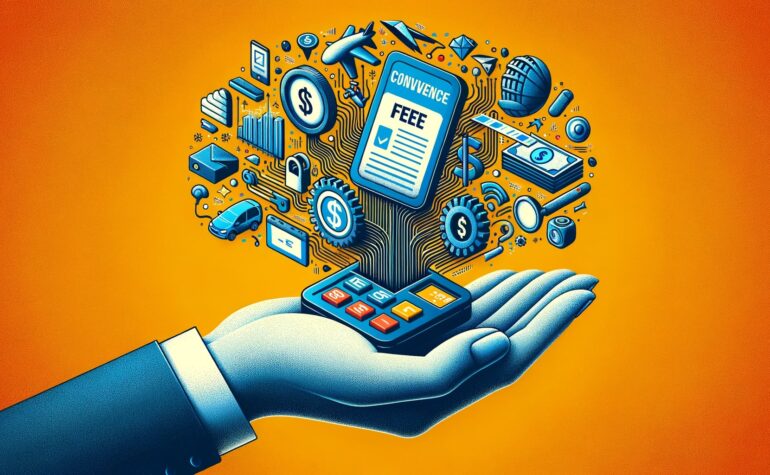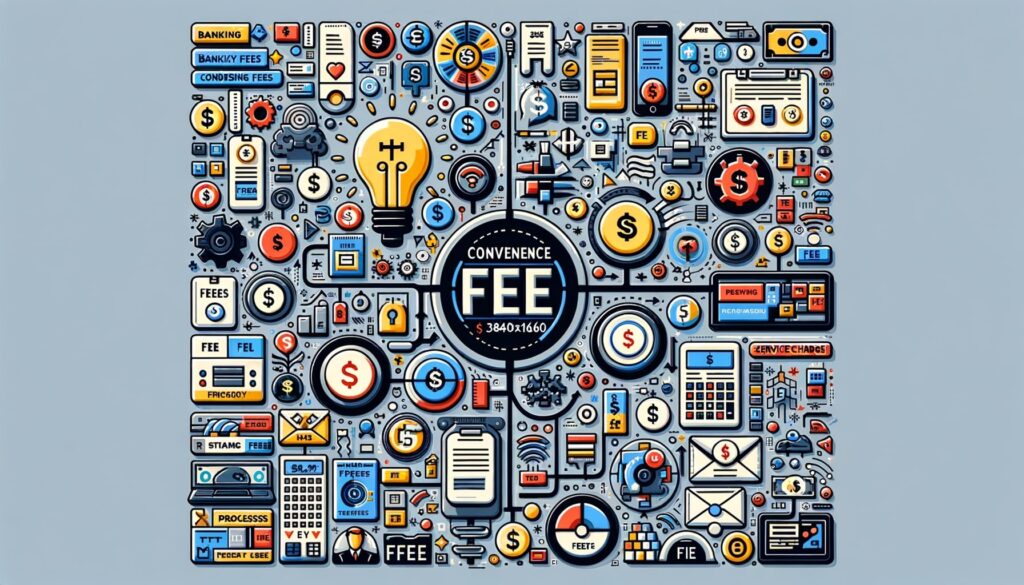Best Credit Card Processing Solutions Tailored for Every Industry

By admin November 17, 2024
In today’s fast-paced world, convenience is a highly valued commodity. From online shopping to mobile banking, consumers are constantly seeking ways to simplify their lives and save time. One aspect of this convenience-driven culture is the concept of convenience fees. But what exactly are convenience fees, and how do they work?
In this comprehensive guide, we will delve into the world of convenience fees, exploring their types, examples, pros and cons, factors influencing their amount, and strategies to avoid or minimize them.
What Are Convenience Fees and How Do They Work?
Convenience fees are charges imposed on customers for the privilege of using a convenient service or making a convenient transaction. These fees are typically added on top of the regular price of a product or service and are intended to compensate the provider for the added convenience they offer. Convenience fees can be found in various industries, including e-commerce, ticketing, travel, and utilities.
The mechanics of convenience fees vary depending on the industry and the specific service being provided. In some cases, convenience fees are a fixed amount added to the total cost of a transaction.
For example, when purchasing tickets online, customers may be charged a flat convenience fee per ticket. In other cases, convenience fees are calculated as a percentage of the transaction value. This is often seen in online payment processing, where a small percentage of the transaction amount is charged as a convenience fee.
Types of Convenience Fees: Exploring Different Categories

Convenience fees can be categorized into several types based on their nature and purpose. Understanding these categories can help consumers better navigate the world of convenience fees and make informed decisions.
- Online Payment Processing Fees: These fees are charged by payment processors for facilitating online transactions. They cover the costs associated with maintaining secure payment gateways and processing payments electronically. Online payment processing fees are commonly seen in e-commerce and online bill payment platforms.
- Ticketing Fees: When purchasing tickets for events, concerts, or flights online, customers often encounter ticketing fees. These fees cover the costs of ticket distribution, customer service, and online booking systems. Ticketing fees can vary depending on the event or airline and are usually non-refundable.
- Convenience Store Fees: Some convenience stores charge additional fees for the convenience of their extended operating hours or for providing services such as ATM access, money transfers, or check cashing. These fees compensate the store for the added convenience they offer compared to traditional retail outlets.
- Utility Convenience Fees: Utility companies may charge convenience fees for certain services, such as paying bills over the phone or using online payment portals. These fees cover the costs of maintaining and operating the payment systems and provide customers with the convenience of paying their bills without visiting a physical location.
- Subscription Convenience Fees: Subscription-based services, such as streaming platforms or membership programs, often charge convenience fees for added features or benefits. These fees allow customers to access premium content or receive exclusive perks, enhancing their overall experience.
Common Examples of Convenience Fees in Various Industries

To gain a better understanding of convenience fees, let’s explore some common examples in different industries:
- E-commerce: Many online retailers charge convenience fees for expedited shipping options or for using third-party payment processors. These fees provide customers with the convenience of faster delivery or a wider range of payment options.
- Event Ticketing: When purchasing tickets for concerts, sports events, or theater shows online, customers often encounter convenience fees. These fees cover the costs of online ticketing platforms and provide customers with the convenience of purchasing tickets from the comfort of their homes.
- Travel: Airlines often charge convenience fees for services such as seat selection, priority boarding, or checked baggage. These fees allow customers to customize their travel experience and enjoy added convenience during their journey.
- Utilities: Some utility companies charge convenience fees for services like phone payments or online bill payment. These fees provide customers with the convenience of paying their bills without visiting a physical location or mailing a check.
The Pros and Cons of Convenience Fees: Weighing the Benefits and Drawbacks

Like any other aspect of commerce, convenience fees come with their own set of pros and cons. Let’s explore the benefits and drawbacks of convenience fees to help you make an informed decision as a consumer.
Pros of Convenience Fees
- Time-saving: Convenience fees allow customers to save time by availing themselves of convenient services or transactions. For example, paying bills online eliminates the need to visit a physical location, saving valuable time and effort.
- Access to additional services: Convenience fees often provide customers with access to additional services or features that enhance their overall experience. For instance, expedited shipping options in e-commerce allow customers to receive their purchases faster.
- Flexibility: Convenience fees offer customers flexibility in terms of payment options, delivery methods, or customization. This flexibility allows customers to tailor their experience to their specific needs and preferences.
- Improved customer service: Convenience fees can contribute to improved customer service by providing customers with convenient options and streamlined processes. For example, online ticketing platforms offer 24/7 customer support, ensuring a smooth ticket purchasing experience.
Cons of Convenience Fees
- Additional costs: Convenience fees add to the overall cost of a product or service, potentially making it more expensive for customers. This can be a drawback, especially for price-sensitive consumers.
- Lack of transparency: Some convenience fees may not be clearly disclosed upfront, leading to surprise charges for customers. Lack of transparency can erode trust and negatively impact the customer experience.
- Non-refundable: In many cases, convenience fees are non-refundable, even if the customer cancels or returns the product or service. This can be frustrating for customers who feel they are being charged for a service they did not fully utilize.
- Perceived unfairness: Customers may perceive convenience fees as unfair or unnecessary, especially if they believe the convenience being offered does not justify the additional cost. This perception can lead to negative brand associations and customer dissatisfaction.
Factors Influencing the Amount of Convenience Fees
The amount of convenience fees can vary depending on several factors. Understanding these factors can help consumers anticipate and evaluate the cost of convenience.
- Industry norms: Different industries have different norms when it comes to convenience fees. For example, ticketing fees in the entertainment industry are generally accepted, while convenience fees in retail may be less common.
- Service provider’s costs: Convenience fees are often designed to cover the costs incurred by the service provider in offering the convenience. Higher costs for the provider may result in higher convenience fees for the customer.
- Level of convenience: The level of convenience being offered can influence the amount of the convenience fee. For example, expedited shipping options in e-commerce may come with higher convenience fees compared to standard shipping.
- Market competition: The level of competition in a particular industry can impact the amount of convenience fees. In highly competitive markets, service providers may keep convenience fees lower to attract and retain customers.
- Customer demand: Customer demand for convenience can also influence the amount of convenience fees. If customers are willing to pay a premium for convenience, service providers may increase their fees accordingly.
How to Avoid or Minimize Convenience Fees: Tips and Strategies
While convenience fees may be unavoidable in some cases, there are strategies consumers can employ to minimize or avoid them altogether. Here are some tips to help you navigate the world of convenience fees:
- Compare service providers: Before making a purchase or using a service, compare different providers to see if there are any that offer lower or no convenience fees. This can help you find the best deal and save money.
- Opt for alternative payment methods: Some service providers offer discounts or waive convenience fees for certain payment methods. For example, paying with a direct bank transfer may be cheaper than using a credit card.
- Plan ahead: In some cases, convenience fees can be higher for last-minute or rush services. Planning ahead and booking or purchasing in advance can help you avoid these additional charges.
- Bundle services: Some service providers offer bundled packages that include multiple services for a lower overall cost. Look for these bundled options to save on convenience fees.
- Negotiate or ask for waivers: In certain situations, it may be possible to negotiate or request a waiver for convenience fees. This is especially true for subscription-based services or when dealing with smaller businesses.
Frequently Asked Questions (FAQs)
Q1. Are convenience fees legal?
Yes, convenience fees are legal as long as they are clearly disclosed to the customer and do not violate any laws or regulations.
Q2. Can convenience fees be refunded?
In most cases, convenience fees are non-refundable, even if the customer cancels or returns the product or service. However, it is always advisable to check the refund policy of the service provider.
Q3. Can convenience fees be negotiated?
In some cases, it may be possible to negotiate or request a waiver for convenience fees, especially when dealing with smaller businesses or subscription-based services.
Q4. Are convenience fees tax-deductible?
Convenience fees are generally not tax-deductible unless they are directly related to a business expense. It is recommended to consult with a tax professional for specific advice.
Q5. Can convenience fees be avoided completely?
While it may not always be possible to avoid convenience fees completely, consumers can employ strategies such as comparing service providers, opting for alternative payment methods, and planning ahead to minimize their impact.
Conclusion
Convenience fees have become an integral part of our modern consumer culture. While they offer time-saving benefits and access to additional services, they also come with additional costs and potential drawbacks.
By understanding the concept of convenience fees, exploring their types and examples, weighing the pros and cons, considering the factors influencing their amount, and employing strategies to minimize or avoid them, consumers can make informed decisions and navigate the world of convenience fees more effectively.
